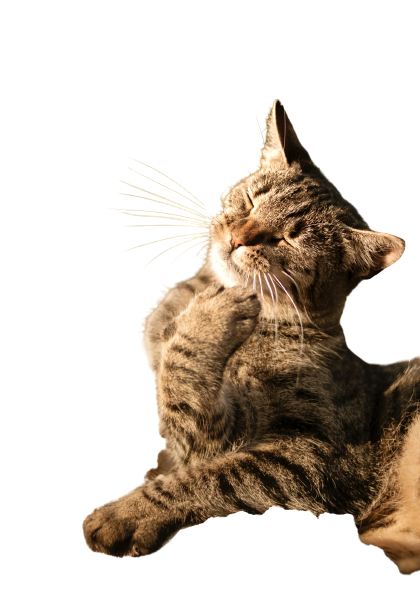Cats are known for their mysterious and independent nature, but recent studies have unveiled the depth of their communication abilities. While it is commonly believed those cats primarily communicate through body language and non-verbal cues. Researchers have found that they possess an extensive repertoire of vocalizations to express their desires and needs to humans.
One of the most familiar sounds a cat makes is the classic “meow.” However, what many people may not realize is that each meow carries a unique meaning.
Pain: Are you frustrated with not being able to understand what your cat wants or needs? Do you feel like you’re constantly guessing and playing a game of trial and error when it comes to meeting their needs?
Agitate: It can be incredibly frustrating when your cat is meowing incessantly, and you have no idea why. Is it hunger? Thirst? Attention? Or is something else entirely going on? This lack of communication can lead to misunderstandings and unnecessary stress for both you and your feline companion.
Solution: But fear not! Scientists have made a groundbreaking discovery about the complex vocalizations that cats use to communicate with humans. And now, with our guide, you can unlock the secrets behind your cat’s meows, purrs, chirps, and trills.

Are you frustrated with not being able to understand what your cat wants or needs? Do you feel like you're constantly guessing and playing a game of trial and error when it comes to meeting their needs?

It can be incredibly frustrating when your cat is meowing incessantly, and you have no idea why. Is it hunger? Thirst? Attention? Or is something else entirely going on? This lack of communication can lead to misunderstandings and unnecessary stress for both you and your feline companion.

But fear not! Scientists have made a groundbreaking discovery about the complex vocalizations that cats use to communicate with humans. And now, with our guide, you can unlock the secrets behind your cat's meows, purrs, chirps, and trills.
Imagine how much easier life would be if you could understand exactly what your cat is trying to tell you. No more guesswork or frustration. You’ll be able to meet their needs promptly and effectively, creating a stronger bond between you and your furry friend.
Our comprehensive guide will teach you everything you need to know about decoding your cat’s vocal language. From hunger cues to requests for playtime or affection, we’ll show you how to interpret each unique sound they make.
Say goodbye to miscommunication and hello to a deeper understanding of your feline friend. Don’t let the frustration continue – take control of the situation today!
Order our guide now and start communicating with your cat in a whole new way. Your furry companion will thank you, and the bond between you will only grow stronger. Don’t miss out on this opportunity – get ready for a lifetime of clear communication with your beloved pet!
However, we want to communicate with my lovely cat. For that reason, we have to maintain some rules and regulation. We have also to follow some steps which are discussed in bellow one by one.
By paying attention to your cat’s actions while they meow, you can potentially identify the specific requests or protests behind each meow. Various meows are commonly used by cats to communicate.
To effectively communicate with your cat, pay attention to these different sounds and their corresponding meanings.
To effectively communicate with cats, it is important to pay attention to the gestures that accompany their vocalizations, as they serve to reinforce their message due to their fluency in body language.
When your cat stares into your eyes, it’s a clear indication that she trusts you.
Cats are constantly learning how to communicate with us, as mentioned before. The more attention and communication you give to your cat, the quicker they will pick it up.
To get a cat’s attention, you can emit a swift and sharp hiss or spit sound, which resembles the way their fellow felines express disagreement.
Cats are known for their sensitivity and sometimes unpredictable reactions when their tails are accidentally stepped on. While it’s essential to be gentle and cautious around them, accidents can still happen. So, if you unintentionally step on your cat’s tail, showing them love and offering an apology is indeed the best course of action.
Immediately after the incident, take a moment to assess your cat’s reaction.
Siamese and other Oriental cats are known for being particularly vocal, while certain longhaired cat breeds tend to be quieter. However, there are always exceptions. It is important to remember that vocalization is not typically a cat’s preferred method of communication. Cats primarily communicate through a complex system of scent, facial expressions, body language, and touch. Cats quickly realize that humans do not understand their non-verbal signals, so they vocalize in an attempt to communicate in a way we can comprehend. Through observing our responses to different sounds, cats learn how to make requests or demands. For example, if a cat rolls onto its back, it indicates relaxation or playfulness.
Siamese and other Oriental cats are known for being particularly vocal, while certain longhaired cat breeds tend to be quieter. However, there are always exceptions. It is important to remember that vocalization is not typically a cat’s preferred method of communication. Cats primarily communicate through a complex system of scent, facial expressions, body language, and touch. Cats quickly realize that humans do not understand their non-verbal signals, so they vocalize in an attempt to communicate in a way we can comprehend. Through observing our responses to different sounds, cats learn how to make requests or demands. For example, if a cat rolls onto its back, it indicates relaxation or playfulness.
If a cat begins to attack your hair by licking or lightly nibbling on it, it is a sign that she is grooming you. This behavior indicates that she sees you as part of her family. While it is not common for cats to do this, when they do, it signifies that they truly love and respect you. By treating your cat with love and respect, they will become a joyful and affectionate companion and friend. Speak to them gently and observe how they attentively listen. They may respond with a contented purr or other signs of happiness. It is important to never be unkind to a cat or kitten; instead, show them love and inform others to do the same. While some cats may enjoy having their tummy stroked, most are cautious about exposing their vulnerable underside. Gradually help them overcome this fear with patience, as most cats are less protective of their chest compared to their belly. Give them gentle strokes every day, but be attentive to their cues and stop if you sense any discomfort.
Cats can express their love for you by imitating your actions. For instance, if you pretend to be dead on the floor, the cat might sniff or nudge you and then mimic the behavior. It is important not to shout at or physically punish a cat, as this will only frighten and anger them, which is counterproductive. Instead, you can use a firm tone of voice to convey your unhappiness, and the cat will understand. Discover the areas where your cat enjoys being rubbed, such as under the chin or behind the ears, and use these spots when they approach you willingly and show affection. If your cat is shy, it is crucial to be gentle so as not to scare them. Attract your cat’s attention by scratching something or patting, as cats are naturally curious and should come to you.
To establish a connection with a grumpy cat, try speaking softly to it and engaging with it daily through activities like brushing, feeding, or playing. Avoid using the cat’s name in an angry manner when disciplining it. Instead, firmly say “No” and refrain from further action. If the cat lightly bites you, take it as a signal to give them space. When a cat exposes its stomach, it indicates contentment and trust. However, rubbing its tummy can sometimes betray that trust. Refrain from flicking your cat’s nose. Remember that a cat’s purring doesn’t always signify happiness; it can also indicate pain, fear, or other emotions. Ensure that you provide your cat with the appropriate amount of food to maintain its health.
To address your cat’s aggression, simply use the word “no” and if possible, pick her up. It is important to handle an upset cat with caution. With patience, cats can be trained to follow commands just like dogs. You can even teach your cat to shake hands with you. Cats may urinate, spray, or leave feces in a prominent spot as a way to mark territory they feel is being threatened by another cat or pet. This behavior could also indicate a urinary tract or bladder infection, or other serious health issues. If this is a problem, it may be necessary to treat the cat or separate them from other cats. It is advisable to consult your veterinarian. Spaying or neutering all cats at an appropriate age is crucial to prevent behavior problems and unwanted kittens.
This is a crucial step in responsible pet ownership that not only benefits the cat but also helps maintain a harmonious living environment for both feline companions and their human counterparts. When male cats reach sexual maturity, typically around six months of age, they may develop a strong instinct to mark their territory by spraying urine. This behavior can be quite unpleasant as it can leave behind an intense and pungent odor that is difficult to eliminate.
It is important to constantly be mindful of the cat. Directly gazing into cat’s eyes should not be considered an act of affection, as cats perceive it as a threat. It is crucial to remember that cats are not humans and do not possess facial expressions, so it is unfair to judge them solely based on their appearance. Instead, observe their actions and behavior to gain insight into their thoughts and emotions. If you happen to own a Devon Rex cat, ensure that you engage in frequent play sessions with them, as Devon Rexes are known for their playful nature.
When picking up your cat, make sure to hold them gently rather than tightly. Holding them too tightly may be interpreted as aggression and can result in severe scratches and injuries. It is important to note that this article does not cover all cat gestures and sounds, as the communication system of cats is remarkably intricate and goes beyond the information provided here. For more comprehensive information, refer to the recommended sources and remember to always observe and understand your individual cat, as each one is unique.